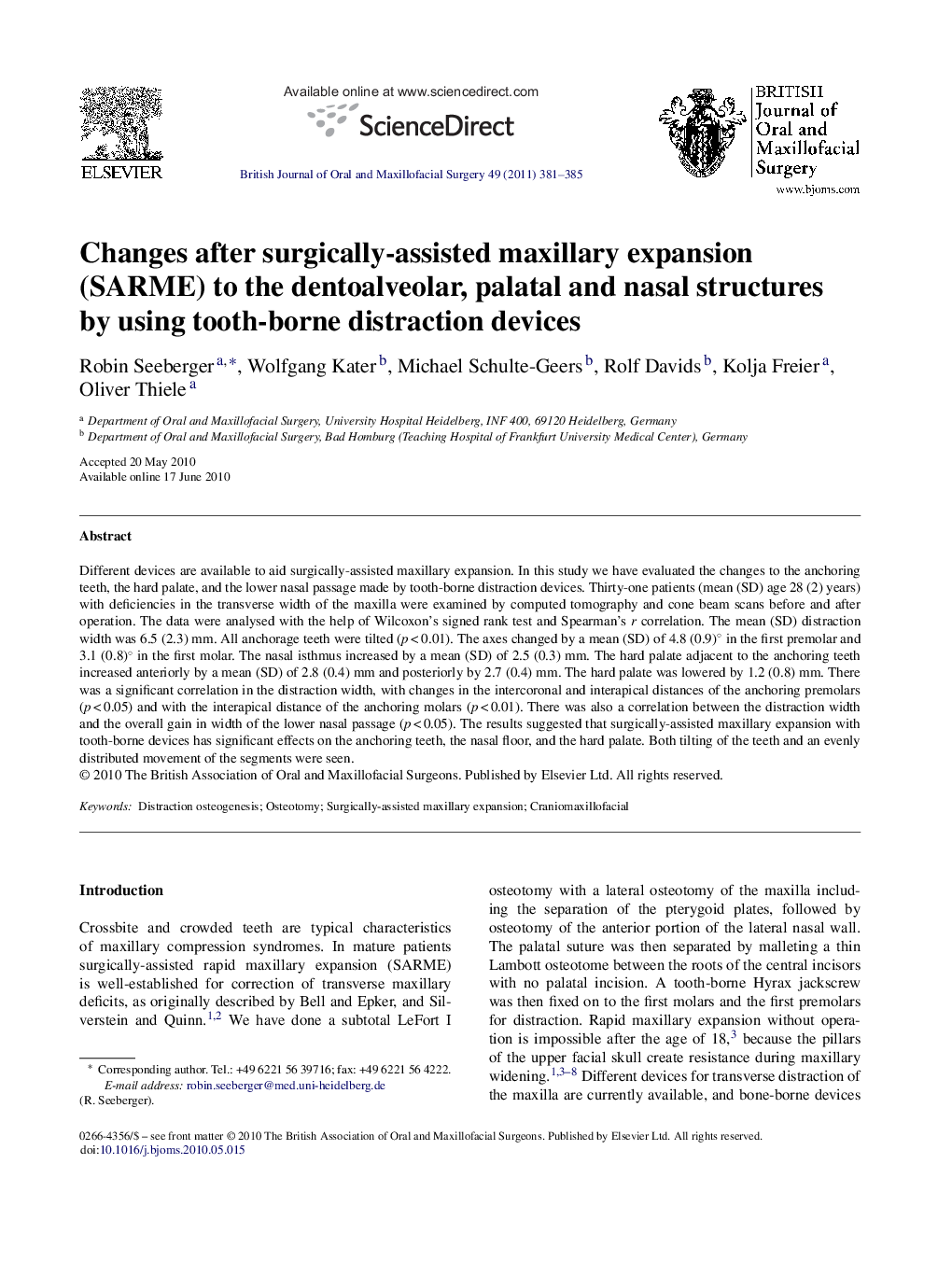| Article ID | Journal | Published Year | Pages | File Type |
|---|---|---|---|---|
| 3124169 | British Journal of Oral and Maxillofacial Surgery | 2011 | 5 Pages |
Different devices are available to aid surgically-assisted maxillary expansion. In this study we have evaluated the changes to the anchoring teeth, the hard palate, and the lower nasal passage made by tooth-borne distraction devices. Thirty-one patients (mean (SD) age 28 (2) years) with deficiencies in the transverse width of the maxilla were examined by computed tomography and cone beam scans before and after operation. The data were analysed with the help of Wilcoxon's signed rank test and Spearman's r correlation. The mean (SD) distraction width was 6.5 (2.3) mm. All anchorage teeth were tilted (p < 0.01). The axes changed by a mean (SD) of 4.8 (0.9)° in the first premolar and 3.1 (0.8)° in the first molar. The nasal isthmus increased by a mean (SD) of 2.5 (0.3) mm. The hard palate adjacent to the anchoring teeth increased anteriorly by a mean (SD) of 2.8 (0.4) mm and posteriorly by 2.7 (0.4) mm. The hard palate was lowered by 1.2 (0.8) mm. There was a significant correlation in the distraction width, with changes in the intercoronal and interapical distances of the anchoring premolars (p < 0.05) and with the interapical distance of the anchoring molars (p < 0.01). There was also a correlation between the distraction width and the overall gain in width of the lower nasal passage (p < 0.05). The results suggested that surgically-assisted maxillary expansion with tooth-borne devices has significant effects on the anchoring teeth, the nasal floor, and the hard palate. Both tilting of the teeth and an evenly distributed movement of the segments were seen.
